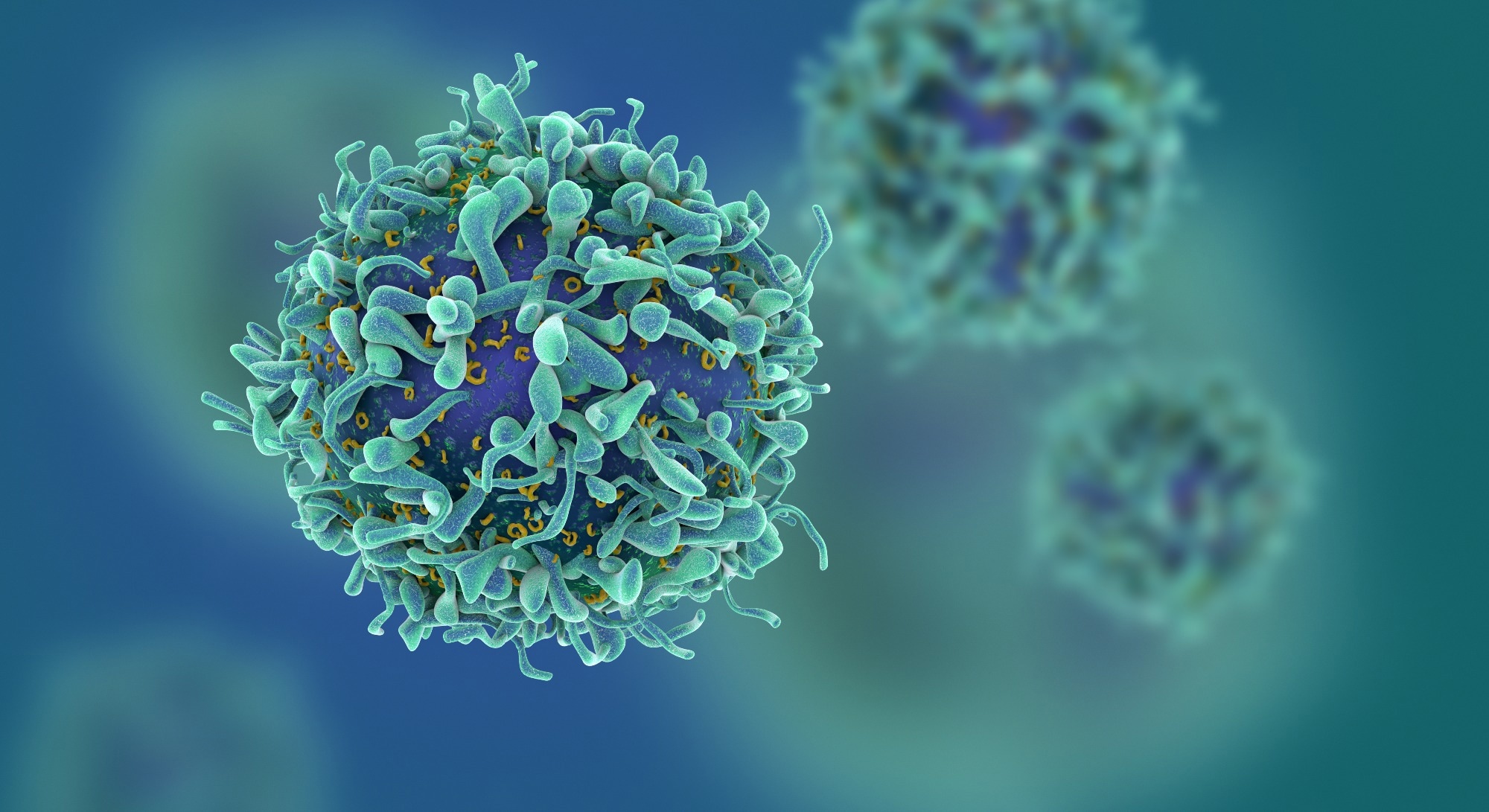In a recent study published in Nature Communications, a group of researchers explained why ion entry is necessary for T cell migration by investigating the role of With No Lysine (K) 1 (WNK1) kinase in regulating ion and water influx and its impact on actin polymerization and cell movement.
 Study: T cell migration requires ion and water influx to regulate actin polymerization. Image Credit: fusebulb/Shutterstock.com
Study: T cell migration requires ion and water influx to regulate actin polymerization. Image Credit: fusebulb/Shutterstock.com
Background
T cell migration, integral for adaptive immunity, involves naive T cells traversing lymphoid organs to find antigens. This process starts with the Chemokine (C-C motif) Ligand 21 (CCL21), triggering C-C Chemokine Receptor Type 7 (CCR7) receptors, leading to integrin-mediated T cell adhesion and migration into lymph nodes.
Here, T cells scan for antigens, essential for effective immune responses. Chemokine signaling causes T cell polarization and actin network formation, crucial for movement, mediated by Ras-related C3 Botulinum Toxin Substrate 1 (RAC1), RAC2, and Cell Division Control Protein 42 (CDC42) Guanosine Triphosphatases (GTPases).
WNK1 kinase, key in ion regulation in kidneys, also plays a vital role in T cell migration. It controls ion influx by activating pathways involving Oxidative-Stress Responsive 1 (OXSR1), Serine/Threonine Kinase 39 (STK39), and ion transporters like Solute Carrier Family 12 Member 2 (SLC12A2). Deficiencies in WNK1-related pathways hinder T cell movement.
Further research is needed to fully understand the mechanisms by which ion influx influences T cell migration and how this process integrates with other cellular systems. This information is essential for advancing our knowledge of immunology and potential therapeutic interventions.
About the study
In the study, researchers investigated the role of WNK1 kinase in T cell migration. Mice with a loxP-flanked Wnk1 allele (Wnk1fl) or a deletion of Wnk1 (Wnk1−) were crossed with mice harboring a tamoxifen-inducible Cre recombinase under the ROSA26 promoter (ROSA26CreERT2 RCE). The resulting bone marrow was used to reconstitute the hematopoietic system of irradiated RAG1-deficient mice. After tamoxifen treatment, these chimeras contained either WNK1-expressing (Wnk1+/−RCE) or WNK1-deficient (Wnk1−/−RCE) T cells.
The study revealed that T cell migration, as assessed through under-agarose assays, is influenced by WNK1 expression and its substrates OXSR1 and STK39. Inhibitors of WNK1 and SLC12A2 also affected migration. Additionally, ion co-transporters regulated by OXSR1 and STK39 were essential, as shown in SLC12A2-deficient cells and inductively-coupled plasma mass spectrometry (ICP-MS) analysis, which indicated a key role for K+, Na+, and Cl− ions in this process.
A quantitative analysis of how water movement is regulated through measurement of relative cell volumes in response to CCL21 was done for a CD4+ T viz cluster of differentiation 4 positive T cells, using a Coulter principle-based cell counter and an imaging technique. Using specific inhibitors, the involvement of aquaporin channels such as Aquaporin 3 (AQP3) strongly impacted T cells' movement speed and polarization.
Finally, the sub-cellular distribution of the WNK1 pathway proteins, as well as their activities on migrating T cells, was analyzed by live cell imaging and staining. This demonstrated the polarization of the proteins and their activities at the leading edge of the migrating T cells. The study thus provided comprehensive insights into the molecular mechanisms underlying T cell migration, highlighting the critical roles of WNK1 pathway proteins, ion movement, and water entry.
Study results
The results of the present study indicated several key findings regarding T cell migration and the role of the WNK1 pathway. Firstly, it was observed that WNK1, along with its substrates OXSR1 and STK39, are essential for the CCL21-induced migration of CD4+ T cells. The slower migration speeds and lack of typical cell polarization in T cells deficient in these proteins evidenced this. Additionally, the use of a WNK1 inhibitor (WNKi) and a SLC12A2 inhibitor (bumetanide) further supported these findings, as both inhibitors reduced migration speed and affected cell shape polarization.
The study also demonstrated the significance of ion movement in T cell migration. ICP-MS revealed increased potassium ions following CCL21 stimulation, which was reduced upon WNK1 inhibition. Experiments modifying sodium and chloride ion concentrations in the medium confirmed their necessity for T cell migration.
Water entry and cell volume regulation were shown to be governed by WNK1 pathway proteins. It was found that WNK1-expressing T cells exhibited an increase in cell volume upon CCL21 stimulation, a response that was absent in WNK1-deficient or inhibited cells. This suggested a role for WNK1 in regulatory volume increase.
Furthermore, water entry, measured through the uptake of deuterium oxide (2H2O), was also CCL21-stimulated and WNK1-dependent.
The requirement of AQP3, a water channel, for CCL21-induced T cell migration was established. The use of a selective AQP3 inhibitor significantly decreased the speed of T cell migration, supporting the hypothesis that water transport via AQP3 is crucial for this process.
Moreover, the study highlighted that WNK1 pathway proteins and their activities are polarized to the leading edge of migrating T cells. Live cell imaging and staining techniques demonstrated the accumulation of these proteins at the leading edge, which was crucial for T cell movement.
The results provided compelling evidence that the WNK1 pathway, through its regulation of ion and water movement, plays a critical role in T cell migration. This pathway's influence on cell volume, ion influx, and water entry, particularly at the leading edge of migrating T cells, underlines its importance in immune cell function.